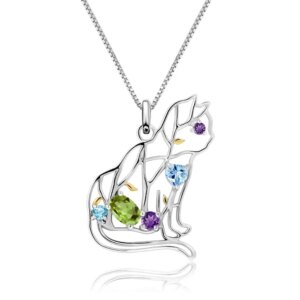Cat Karma Creations: Cats fighting can be a distressing issue for pet owners, leading to physical injuries and emotional stress. This article explores the common causes of cat aggression, the signs to watch for, and practical solutions to prevent and manage fights. By understanding the root causes and taking proactive steps, you can create a harmonious environment for your feline friends. Discover how to identify and address the issues, and learn when to seek professional help. If you need assistance or have any questions, feel free to contact us at (800) 343-1604 or info@catkarmacreations.com.
Common Causes of Cats Fighting
Past Trauma and Lack of Socialization
Cats that have experienced past trauma or lack of socialization are more likely to exhibit aggressive behaviors. Trauma can stem from previous negative experiences, such as abuse or neglect, which can leave lasting emotional scars. Cats that have not been properly socialized during their critical developmental stages may also struggle with aggression. Early socialization, involving gentle handling and positive interactions, can significantly reduce the likelihood of aggression in adult cats. At Cat Karma Creations, we understand the importance of a happy and healthy feline environment, and we offer a range of cat-themed jewelry and gifts to celebrate the joy of cat ownership.
Resource Competition and Territorial Disputes
Resource competition is a common cause of cat fighting in multi-cat households. Cats are territorial by nature, and disputes over food, litter boxes, and sleeping areas can lead to aggressive behavior. Providing ample resources, such as multiple feeding stations and litter boxes, can help minimize conflicts. Gradual introduction of new pets and environmental enrichment, such as scratching posts and interactive toys, can also reduce territorial tensions. Our cat-themed jewelry can be a perfect gift to celebrate the bond between you and your feline friend.
FCats Fighting Fear and Anxiety
Fear and anxiety can trigger aggressive behavior in cats. Cats may become fearful due to unfamiliar environments, loud noises, or the presence of other animals. Symptoms of fear-based aggression include hiding, trembling, and avoiding interaction. Creating a safe and secure environment, using calming aids like pheromone diffusers, and gradual desensitization can help alleviate fear and anxiety in cats. At Cat Karma Creations, we believe in the power of positive reinforcement and creating a loving environment for your pets.
Identifying the Signs of Cat Fighting
Behavioral Indicators
Behavioral indicators of cat fighting include hissing, growling, and attacking. These are often the most visible signs of aggression and can be easily recognized by pet owners. Other behavioral signs to watch for include defensive postures, such as crouching and flattening ears, and offensive postures, such as puffing up the fur and showing the teeth. Understanding these behaviors can help you intervene before a fight escalates. If you need more tips on managing cat behavior, visit our online store for a variety of cat-inspired gifts.
Physical Symptoms
Physical symptoms of cat fighting can include injuries such as scratches, bites, and wounds. These injuries can be minor or severe, and in some cases, may require veterinary attention. Other physical symptoms to watch for include changes in appetite, energy levels, and grooming habits. Persistent physical symptoms may indicate underlying health issues or chronic stress, which can contribute to aggressive behavior. Our cat-themed jewelry can be a thoughtful gift to show your love for your furry friend.
Environmental Cues
Environmental cues can provide valuable insights into the reasons behind cat fighting. For example, cats may become aggressive in areas where they feel threatened or uncomfortable, such as near windows or doors. Observing the environment can help you identify potential triggers and make necessary adjustments. Creating safe spaces and providing hiding spots can help reduce stress and prevent conflicts. At Cat Karma Creations, we offer a range of nature-inspired and sterling silver jewelry to enhance your connection with nature and your pets.
Practical Solutions to Prevent Cat Fights
Behavior Modification Techniques
Behavior modification techniques can be effective in addressing aggressive behaviors in cats. These techniques include positive reinforcement, which involves rewarding desired behaviors with treats or praise, and negative reinforcement, which involves removing an unpleasant stimulus to encourage desired behaviors. Consistent training and patience are key to successful behavior modification. Working with a certified trainer or veterinary behaviorist can provide additional support and guidance. At Cat Karma Creations, we believe in the power of positive reinforcement and creating a loving environment for your pets. If you need more tips, feel free to contact us at (800) 343-1604 or sales@catkarmacreations.com.
Environmental Enrichment
Environmental enrichment involves creating a stimulating and engaging environment for cats. This can include providing interactive toys, scratching posts, and climbing structures. Enrichment can help reduce boredom and stress, which are common triggers for aggressive behavior. Additionally, providing vertical spaces, such as cat trees and shelves, can help cats establish their own territories and reduce conflicts. Regular play sessions and mental stimulation activities can also promote positive behaviors and strengthen the bond between cats and their owners. Our yoga-inspired items can help you and your cat find inner peace and harmony.
Positive Reinforcement
Positive reinforcement is a powerful tool for managing cat aggression. By rewarding desired behaviors, such as calm and friendly interactions, you can encourage your cats to continue these behaviors. Treats, praise, and playtime can all be used as positive reinforcements. It’s important to be consistent and patient, as behavior modification takes time and effort. Celebrating small victories and maintaining a positive and supportive environment can help your cats feel more secure and less prone to aggression. At Cat Karma Creations, we offer a range of special pieces to celebrate the unique bond between you and your cat.
When to Seek Professional Help
Veterinary Behaviorists
In some cases, professional help may be necessary to address aggressive behaviors in cats. Veterinary behaviorists are specialized veterinarians who have expertise in animal behavior and can provide comprehensive assessments and treatment plans. They can help identify underlying health issues, such as pain or thyroid disorders, that may be contributing to aggression. Veterinary behaviorists can also recommend behavior modification techniques and prescribe medications if needed. If you need professional assistance, feel free to reach out to us at (800) 343-1604 or admin@catkarmacreations.com.
Certified Trainers
Certified trainers can provide additional support and guidance in managing cat aggression. They can offer hands-on training sessions and personalized advice to help you address specific issues. Certified trainers can also teach you how to use positive reinforcement and behavior modification techniques effectively. Working with a certified trainer can help you build a strong foundation for managing and preventing aggressive behaviors in your cats. Our website offers a variety of cat-themed gifts and jewelry to celebrate the joy of cat ownership.
Behavioral Therapy
Behavioral therapy can be an effective treatment for cats that engage in frequent fights. This type of therapy involves a structured approach to behavior modification, often involving a combination of positive reinforcement, environmental changes, and medication. Behavioral therapy can help cats overcome fear, anxiety, and other emotional issues that contribute to aggressive behavior. It’s important to work with a qualified professional who can provide ongoing support and guidance throughout the therapy process. At Cat Karma Creations, we are committed to helping you create a peaceful and harmonious environment for your cats. If you need more tips or have any questions, feel free to contact us at (800) 343-1604 or info@catkarmacreations.com.
| Feature | Cat Aggression | Territorial Disputes | Fear-Based Aggression |
|---|---|---|---|
| Causes | Past trauma, lack of socialization | Resource competition, new pets | Past negative experiences, unfamiliar environments |
| Symptoms | Hissing, growling, attacking | Marking territory, blocking access | Hiding, trembling, avoiding interaction |
| Solutions | Behavior modification, positive reinforcement | Establish clear boundaries, provide separate spaces | Gradual desensitization, use of calming aids |
| Prevention | Early socialization, consistent training | Gradual introduction of new pets, environmental enrichment | Safe spaces, gradual exposure to triggers |
| Professional Help | Veterinary behaviorist, certified trainer | Veterinary behaviorist, certified trainer | Veterinary behaviorist, certified trainer |
Managing cats fighting requires a comprehensive approach that addresses the underlying causes and provides a supportive environment. By understanding the signs, implementing practical solutions, and seeking professional help when needed, you can ensure your cats live in peace and harmony. Visit our website to find excellent gifts for cat lovers and follow us on social media for more tips and updates. If you have any questions or need assistance, feel free to contact us at (800) 343-1604 or info@catkarmacreations.com. You can also follow us on Facebook and Instagram for more tips and updates.
- Understand the root causes of cat aggression, such as past trauma or lack of socialization.
- Identify the signs of territorial disputes, such as marking territory or blocking access to resources.
- Recognize the symptoms of fear-based aggression, including hiding, trembling, and avoiding interaction.
- Implement behavior modification techniques and positive reinforcement to address aggressive behaviors.
- Create a safe and enriched environment to prevent conflicts and reduce stress.
- Seek professional help from a veterinary behaviorist or certified trainer for persistent issues.
Popular Quote
“Cats are a mysterious kind of folk. There is more passing in their minds than we can tell.” – Agatha Christie
Statistical Fact
According to the American Veterinary Medical Association, approximately 30% of cats in multi-cat households exhibit aggressive behavior towards other cats. This statistic highlights the importance of understanding and managing cat aggression to ensure a harmonious living environment. (Source: American Veterinary Medical Association)
Three Tips for Managing Cat Aggression
- Establish Clear Boundaries: Create separate spaces for each cat, especially in areas like feeding stations, litter boxes, and sleeping areas. This can help reduce territorial disputes and minimize conflicts.
- Use Positive Reinforcement: Reward your cats for calm and friendly interactions. Treats, praise, and playtime can reinforce desired behaviors and encourage a positive environment.
- Provide Environmental Enrichment: Offer a variety of toys, scratching posts, and climbing structures to keep your cats mentally and physically stimulated. This can help reduce boredom and stress, which are common triggers for aggression.
Popular Questions
- How can I introduce a new cat to my existing pets? Gradually introduce the new cat by keeping them in a separate room initially. Use pheromone diffusers and swap bedding to familiarize them with each other’s scents. Supervise their interactions and provide positive reinforcement for calm behavior.
- What are the signs of fear-based aggression in cats? Cats may exhibit fear-based aggression through hiding, trembling, avoiding interaction, and defensive postures. Creating a safe and secure environment can help alleviate these symptoms.
- When should I seek professional help for cat aggression? If your cats continue to exhibit aggressive behavior despite your efforts, it may be time to consult a veterinary behaviorist or certified trainer. They can provide comprehensive assessments and tailored solutions to address the issue.
Final Thoughts
Managing cat aggression is a multifaceted process that involves understanding the root causes, recognizing the signs, and implementing practical solutions. By creating a supportive and enriched environment, you can help your cats live in peace and harmony. If you need more tips or have any questions, feel free to contact us at (800) 343-1604 or info@catkarmacreations.com. Visit our website to find excellent gifts for cat lovers and follow us on social media for more tips and updates.














